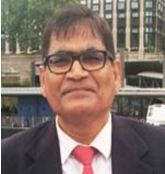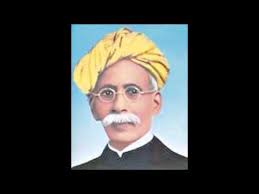 Prof Satya Narayan Misra in Bhubaneswar, April 11, 2023: Madhusudan Babu is credited with several firsts; the first postgraduate including graduation in law, the first lawyer, and the first minister who played a pivotal role in bolstering Odia’s identity at the turn of the 20th century.
Prof Satya Narayan Misra in Bhubaneswar, April 11, 2023: Madhusudan Babu is credited with several firsts; the first postgraduate including graduation in law, the first lawyer, and the first minister who played a pivotal role in bolstering Odia’s identity at the turn of the 20th century.
But his pioneering role as an industrialist, who cared for reputation and quality over profit is not adequately discussed. The way he gave voice to the local artisans by setting up Orissa Art Wares in 1898 and improving the self-esteem and livelihood of Dalits by setting up Utkal Tannery in 1905 is not adequate. He could be controversial when he embraced Christianity.
When he passed away Gandhi paid him a fulsome tribute by observing: ‘Though he professed Christianity, he had the same regard for Hinduism that he entertained for his own faith. He taught the youth dignity of labor and gave practical proof of his teaching by establishing at great personal sacrifice a tannery in Cuttack’.
Madhusudan set up the Utkal tannery at Cuttack in 1905, with two objectives; to ameliorate the acute economic plight of the Dalits, who were engaged in the business of animal hides, and harness the excellent opportunity by producing leather goods and shoes and exporting them. He was truly global in vision when he observed: “In India, we are engaged in the Council how to stop cow slaughter, while German factories were turning out valuable leather goods from the hides of dead cattle.”
Germany made 48 million Army boots during WWI. He observed that raw hides were being exported to cater to the industrial need of England & other European countries at cheap rates (Rs 9 crores annually) and imported leather products at high prices. Since shoe making was the traditional occupation of some Dalit communities in Odisha, he took a decision to give them formal training so that they can upgrade their traditional skills and get good income by manufacturing and selling them indigenously & also exporting them. The echo of the Drain Theory of Dadabhai Naroji (1871) could be clearly discerned.
He went to Germany to see the leatherwork there and brought back a German expert to help him run the tannery. Apart from cow and sheep hide, the tannery used the hides of lizards, snakes, and crocodiles to make fine leather products. The goods made of lizard skins were so soft and smooth that they became very popular and found their way to foreign markets in England, Europe & Japan, fetching high prices. Within the country, many products were supplied to the Police Department & Post & Telegraph department of GOI. Madhusudan never compromised with the quality of the products and cared for the tannery as if it was his own.
 The success story of the tannery spread far & wide. National leaders like Gandhi and Ambedkar praised Madhusudan on two counts, for generating jobs and employment for Dalits and for striking at the root of untouchability. When Gandhi came to Odisha in 1925, he visited Utkal tannery he noticed how upper caste Brahmins, Karans & Dalits worked together without caste aversion, a unique template in social unity. He also liked how the tannery worked with their hands.
The success story of the tannery spread far & wide. National leaders like Gandhi and Ambedkar praised Madhusudan on two counts, for generating jobs and employment for Dalits and for striking at the root of untouchability. When Gandhi came to Odisha in 1925, he visited Utkal tannery he noticed how upper caste Brahmins, Karans & Dalits worked together without caste aversion, a unique template in social unity. He also liked how the tannery worked with their hands.
He wrote: “Without the use of our hands & legs, our brains would be atrophied. Tolstoy taught the same lessons through many of his tales. “Like Gandhi, Ambedkar held him in high esteem. Like Madhusudan, Ambedkar was a rationalist and praised him for his industrial enterprise. Caste as a stigma to be removed was the common thread between them. In fact, in March 1916, Madhusudan moved a resolution in the Council Hall where he emphasized how the caste stigma was responsible for the plight of depressed classes in India. For him’ untouchability as a boundary line between man and man should be removed.’
Utkal Tannery did very well for about twenty years in terms of production and distribution. Even before the Swadeshi movement of Bengal, this idea of pioneering a new industry could be conceived and successfully practiced by a highly educated man, a busy lawyer; in a stinking trade which from time immemorial belonged to the chamars (depressed chamars) in India.
It is unfortunate that around 1925, the Utkal tannery started incurring heavy losses. Firstly because of his multifarious engagements, he could not supervise the work properly. Most importantly it was his unwavering commitment to quality that led to setting fire to thousands of pairs of shoes if he found defects in one or two. He used to say; ‘If a bad pair of shoes fall into the hands of a foreigner, he will say that the Oriyas are cheats. For him, Orissa’s craftmanship was more important than profits. He was declared insolvent and his house was auctioned off.
The engagement of Dalits in the tannery in the early part of the 20th century was certainly a revolutionary step. It gave them not only a regular source of income but self-respect at a time when even the shadows of Dalits were considered polluting. The tannery became the nursery of social unity and brotherhood. It is interesting to note that forty-five years before Madhusudan, Jyotirao Phule, an anti-caste intellectual had argued that caste in India is a form of slavery and must be abolished.
 Madhusudan demonstrated similar concern for the depressed classes. Phule established the first-ever girls’ school in India in 1848. Madhu Babu established the first girl’s school in 1905 & the first women’s college in 1913. Both believed:’ without education, wisdom was lost, without morals development was lost.’
Madhusudan demonstrated similar concern for the depressed classes. Phule established the first-ever girls’ school in India in 1848. Madhu Babu established the first girl’s school in 1905 & the first women’s college in 1913. Both believed:’ without education, wisdom was lost, without morals development was lost.’
Phule and Madhusudan were born in the same month April. Phule was stirred by the writings of Thomas Paine’s masterwork The Rights of Man (1791) where he argued that popular political revolution is possible is permissible when the government does not safeguard the rights of its people. Madhusudan eschewed radical movements against the British.
He believed in petitioning like Gokhale the liberal Congressman. He had a distinctive view of nationalism where each province is to e recognized as a nation of nations, much as the European nations. He was a pioneer of the concept of federalism, much before it was recognized in the Government Act of 1935 & our Constitution and identified by the Supreme Court in the Keshahavanand Case (1975) as a basic structure.
Article 29 of our Constitution states: Any section of citizens residing in the territory of India having a distinct language, script or culture shall have the right to conserve the same. Much before this was incorporated in our Constitution as a fundamental right and states reorganized in linguistic lines in 1956, Madhu Babu recognized the need to bring together Odia-speaking people living as minorities under different administrative dispensations as one linguistic State and almost made it almost a reality by the time he died.
He sowed the seeds of self-esteem amongst the most deprived Dalits.
He was a rare renaissance man who was a radical among liberals and a liberal among radicals. As we celebrate his 175th BDay this month, his unique legacy in terms of promoting local craft & thinking globally, promoting education, and morality above opportunism will remain salient.
A Tribute to Madhu Babu on his 175th B-Day.


Leave a Reply
Be the First to Comment!